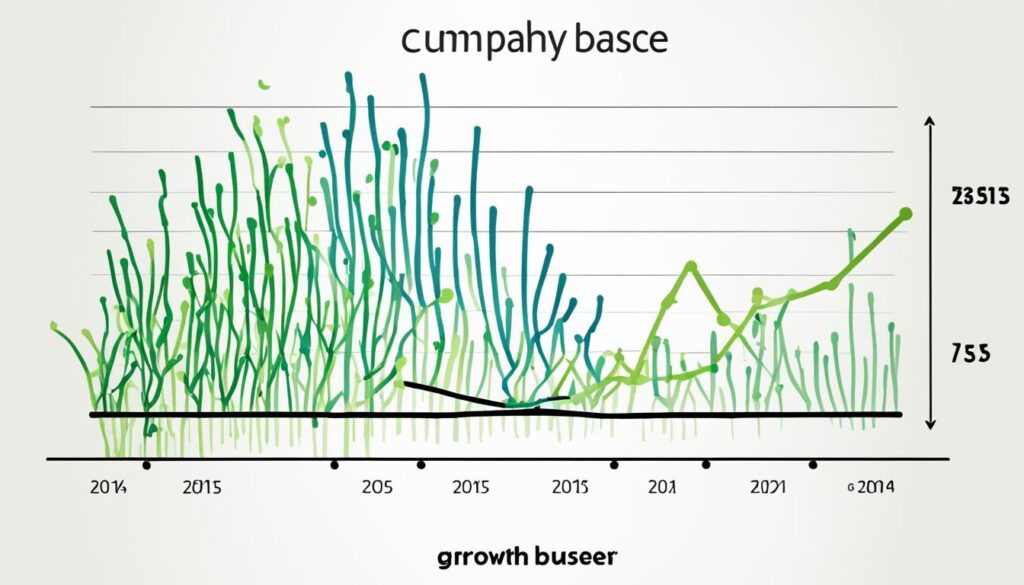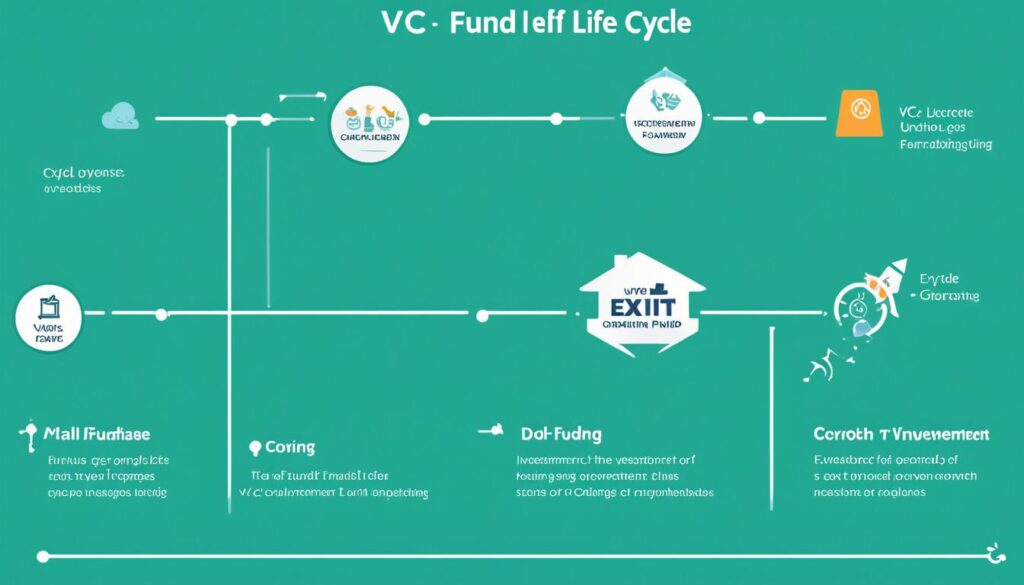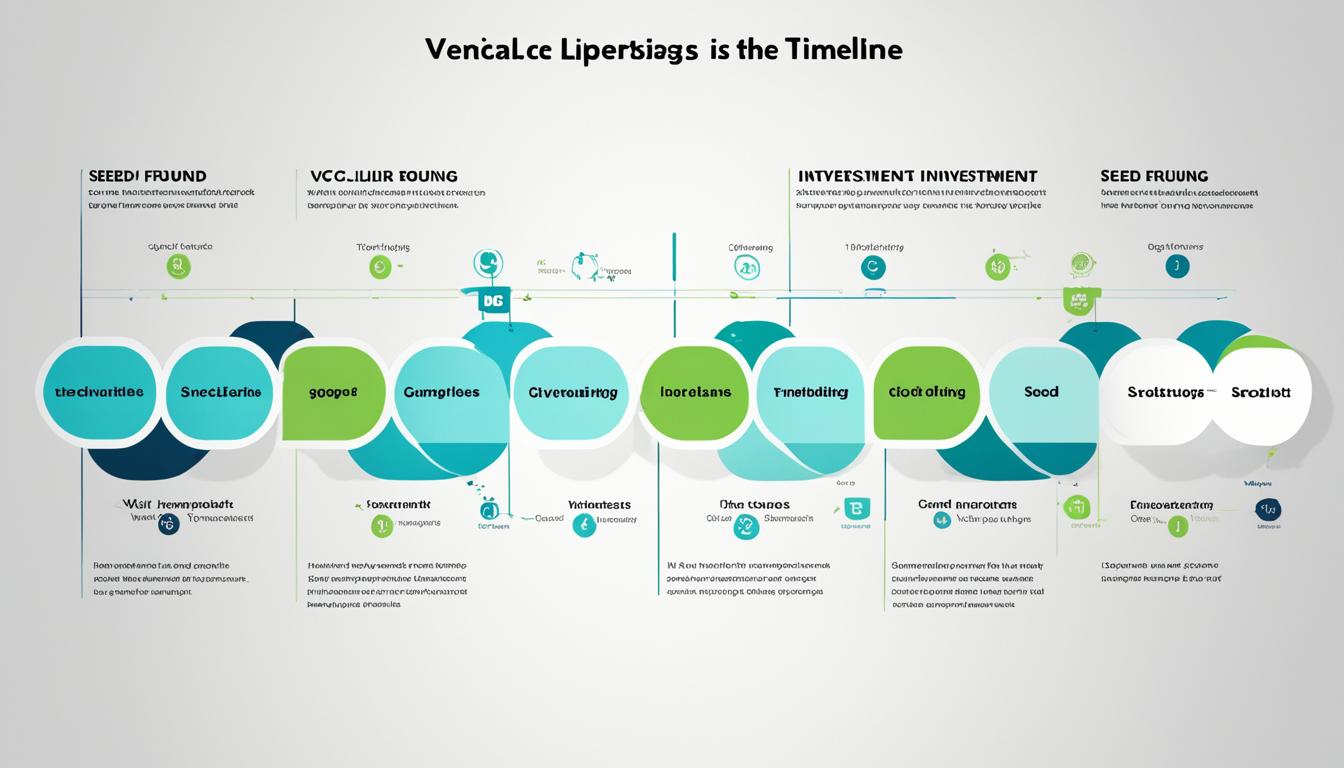Have you ever wondered about the lifespan of venture capital (VC) investments? While the popular perception may be that VC-backed startups raise money in the blink of an eye, the reality is often quite different. According to the first source, VC investments typically have an average duration of 18-24 months from the initial fundraising to the next round. This means that entrepreneurs need to plan ahead and start their fundraising efforts well in advance to ensure their company’s survival and growth.
But that’s not all. The source cites data from Peter Walker at Carta Insights, which suggests even longer effective timeframes for VC investments. The data shows that, on average, startups take over 2 years to raise a Series A after their priced Seed round, 844 days between Series A and B rounds, and 1,090 days between Series B and Series C. And these timeframes have actually lengthened by 20-30% over the past year. While there may be exceptions where companies raise new rounds quickly, the source emphasizes that this does not reflect the actual financing needs of the business, but rather the supply and demand in the market.
Key Takeaways
- Venture capital investments have an average duration of 18-24 months from initial fundraising to the next round.
- Startups typically take over 2 years to raise a Series A after their priced Seed round, with even longer durations between later-stage rounds.
- These investment timeframes have lengthened by 20-30% over the past year, reflecting changes in market conditions rather than financing needs.
- Entrepreneurs need to plan their fundraising efforts well in advance, as it takes about 4 months on average to close a new round.
- The supply and demand dynamics in the venture capital market can influence the pace of investment, rather than the actual financing requirements of the business.
Identifying the Right Investor
When seeking venture capital (VC) funding, entrepreneurs must take the time to identify the right investor that aligns with their business needs. This involves understanding the investment stages that different VC firms focus on, researching their investment strategies, and ensuring there are no conflicts of interest that could hinder the partnership.
Understanding Investment Stages
VC firms often specialize in specific investment stages, such as seed, Series A, or later-stage rounds. Entrepreneurs need to research which firms are actively investing in their stage of growth to increase the chances of securing funding. This phase can take 2-4 weeks as entrepreneurs pitch at events, cold email investors, or seek warm introductions to decision-makers at VC firms.
Researching Investment Strategies
In addition to understanding investment stages, entrepreneurs must also research the investment strategies of VC firms to identify those that best fit their business model and growth plans. Some VCs may focus on specific industries, while others may have a more diversified portfolio. Aligning with the right VC strategy is crucial for a successful partnership.
Avoiding Conflicts of Interest
Entrepreneurs should also carefully evaluate potential conflicts of interest when considering VC investors. This includes assessing whether the VC has invested in or has relationships with competitors, as well as understanding the VC’s policies around board seats, voting rights, and other control mechanisms. Addressing these issues upfront can help avoid complications down the line.

Confirming Investor Interest
Once an investor shows initial interest, the venture capitalist (VC) will want to further assess whether the company is investable. This involves filling in gaps from the entrepreneur’s pitch deck or presentation, asking questions about market size, product demo, competition, business model, financial projections, team background, and go-to-market strategies. The source estimates this interaction phase to take 2-4 weeks, as VCs are evaluating multiple opportunities concurrently and will stop the process if they find any red flags. The source notes that some VCs may have faster decision-making processes, but they are the exception rather than the norm.
Assessing Market Size
VCs will closely examine the potential market size for the company’s products or services. They want to understand the addressable market, growth projections, and the company’s ability to capture a significant share. Thorough research and data-driven analysis are essential to demonstrating product viability and the company’s long-term growth potential.
Evaluating Business Model
The VC will also delve into the company’s business model, evaluating factors such as revenue streams, cost structure, pricing strategy, and scalability. They want to assess the viability of the business model and its ability to generate sustainable profits and returns for the investors.
Demonstrating Product Viability
In addition to market size and business model, the VC will scrutinize the company’s product or service offering. They will want to see a working prototype, understand the competitive landscape, and evaluate the product’s viability in the market. Entrepreneurs must be prepared to provide a compelling product demonstration and address any concerns the VC may have.

Securing Fund Approval
Once a venture capital (VC) partner is convinced they want to invest, the next step is to secure approval from the firm’s investment committee (IC). This committee could comprise all the partners, a representation of the limited partners, or a group of external advisors. Before presenting the investment opportunity to the IC, the partner will craft an investment memo, a comprehensive document that outlines the key details of the deal.
Preparing Investment Memo
Crafting the investment memo is a crucial step in the securing VC fund approval process. This document serves as the foundation for the IC’s decision-making, as it provides a detailed overview of the investment thesis, the company’s market opportunity, its competitive positioning, the management team, financial projections, and the proposed deal terms. Preparing this memo can take 1-4 weeks, as the partner must ensure they have addressed all the relevant information the IC will need to evaluate the opportunity.
Scheduling Investment Committee Meetings
Once the investment memo is ready, the partner must then schedule the investment committee meeting. This can be a time-consuming process, as the IC typically only considers 1-2 companies per meeting, and there may be a waiting list. The source estimates that scheduling the IC meeting can take an additional 1-4 weeks. During the meeting, the IC may request the entrepreneur to address unexpected questions or confirm key performance indicators before ultimately approving the investment.
The preparation of the investment memo and the scheduling of the investment committee meeting are critical steps in the venture capital fundraising process. By carefully crafting the investment memo and navigating the IC meeting, entrepreneurs can increase their chances of securing VC fund approval and moving forward with the investment.

Negotiating Term Sheet
Once the investment committee approves the deal, the venture capital (VC) partner will send the entrepreneur a term sheet outlining the offer, valuation, and standard terms. This negotiation phase typically takes 1-2 weeks, as the entrepreneur may want to discuss and potentially modify certain provisions, such as
drag-along, tag-along, liquidation preferences, and board representation
.
Understanding Key Terms
The entrepreneur should carefully review the term sheet to understand the key provisions and how they could impact the future of the business. Negotiating the VC term sheet is a crucial step in the investment process, as it sets the foundation for the partnership between the founders and the investors.
Hiring Legal Counsel
To ensure the best possible outcome, the source recommends that the entrepreneur hire a lawyer to assist with reviewing and negotiating the VC term sheet. This is especially important for first-time entrepreneurs who may be less experienced in understanding key VC term sheet provisions. However, the source notes that some VC firms use more standardized, entrepreneur-friendly term sheets, particularly if they invest quickly and frequently, as they know later-stage investors will bring their own terms.
Exploring Convertible Notes
In some cases, entrepreneurs may consider using convertible notes for their VC investments. This financing instrument can provide a more streamlined and flexible approach compared to traditional equity investments, as it allows the VC to delay the valuation discussion until a future funding round. Exploring the use of convertible notes can be a strategic option for entrepreneurs as they negotiate the VC term sheet.

Conducting Due Diligence
Before finalizing any venture capital (VC) investment, VCs will meticulously scrutinize the target company through a comprehensive due diligence process. This stage is crucial for identifying and mitigating potential risks that could impact the success of the investment.
Legal and Regulatory Compliance
The VC due diligence process typically involves hiring third-party firms to review the company’s legal contracts, bylaws, intellectual property (IP), and compliance with relevant regulations. VCs want to ensure there are no outstanding legal issues or regulatory concerns that could jeopardize the investment. This review can uncover potential risks related to legal and regulatory compliance that need to be addressed before the investment is finalized.
Financial and Accounting Audits
Another key component of the VC due diligence is a thorough examination of the company’s financial records and accounting practices. VCs will scrutinize past financial statements, tax filings, and other financial documentation to validate the accuracy and integrity of the company’s financial and accounting audits. This allows VCs to assess the financial health of the business and identify any potential red flags or issues that require further investigation.
Technical Assessments
In addition to legal and financial reviews, VCs will also conduct technical assessments of the company’s infrastructure, software, and overall technological capabilities. This may involve evaluating the company’s IT systems, data security protocols, and product development processes to ensure the technology is sound and aligned with the business’s strategic objectives. VCs want to be confident that the company has the necessary technical assessments in place to execute its plans successfully.
The comprehensive due diligence process is designed to provide VCs with a comprehensive understanding of the target company, its operations, and the potential risks associated with the investment. By thoroughly evaluating the company’s legal, financial, and technical aspects, VCs can make informed decisions and structure the investment in a way that minimizes their exposure to risk.

How long do VC investments last?
Building on the information provided in the first section, the first source delves deeper into the typical timeframes for venture capital (VC) investments. It cites data from Peter Walker at Carta Insights showing that the average startup now takes over 2 years to raise a Series A after their priced Seed round, 844 days between Series A and B rounds, and 1,090 days between Series B and Series C. The source attributes this lengthening of investment durations to a 20-30% increase over the past year.
Average Investment Time Frames
The data from Carta Insights reveals that the average duration of VC investments has been increasing significantly, with startups taking longer to raise follow-on rounds. This trend suggests that entrepreneurs should plan for a more extended fundraising process when seeking VC funding.
Factors Influencing Investment Duration
Several factors can influence the duration of VC investments, including the company’s progress in reaching key milestones, market conditions, and the VC’s investment strategy and portfolio management approach. Startups that demonstrate consistent growth and the ability to hit their targets may secure follow-on funding more quickly, while those facing challenges may experience longer investment durations. Additionally, the VC’s own portfolio management priorities and fund lifecycle can also affect the timing of their investments.
| Round | Average Time Between Rounds |
|---|---|
| Seed to Series A | Over 2 years |
| Series A to Series B | 844 days |
| Series B to Series C | 1,090 days |
This table provides a clear overview of the average duration of VC investments between various funding rounds, as reported by the Carta Insights data cited in the source. The increasing timeframes between rounds highlight the extended nature of the VC investment process that entrepreneurs should be prepared for when seeking venture capital funding.

Capital Allocation Strategy
When it comes to venture capital (VC) investments, the capital allocation strategy employed by VC funds is a crucial factor in their success. Rather than simply dividing their funds evenly across investments, VC firms typically take a more nuanced approach to ensure they can effectively support their portfolio companies throughout their growth journey.
Determining Initial Investment Size
VC funds often opt for a staged approach, making a relatively smaller initial investment, around 30% of the expected total funding requirement. This allows them to balance early valuations with gaining more in-depth knowledge about the company’s performance before committing additional capital. By reserving the majority of the capital for follow-on rounds, VCs can provide the necessary support as the company reaches key milestones and scaling opportunities.
Reserving Capital for Follow-on Rounds
Recognizing the importance of follow-on funding, VC firms deliberately set aside a significant portion of their capital to deploy in subsequent financing rounds. This strategic allocation of resources enables them to double down on their successful investments, providing the additional capital required for these companies to continue their growth trajectory. This approach allows VCs to maximize their potential returns while managing their overall risk exposure.
Setting Maximum Investment Limits
VC funds also establish guidelines for the maximum investment they will make in any single portfolio company. This target ownership stake, typically ranging from 15% to 25%, is reached through the initial investment and subsequent follow-on rounds. By limiting their maximum exposure, VCs can diversify their portfolio and mitigate the risks associated with over-concentration in a particular venture.

Fund Life Cycle and Investment Timing
Venture capital (VC) funds typically operate on a 10-year life cycle, during which they must invest capital and generate returns for their investors. This lifecycle is marked by distinct phases that shape a VC fund’s investment strategy and timing. Understanding the VC fund life cycle is crucial for entrepreneurs seeking VC funding and for aspiring fund managers alike.
Building the Initial Portfolio
Most VC funds focus on building their baseline portfolio of investments within the first 1.5 to 3 years after launching. This “discovery” phase is crucial, as fund managers aim to quickly identify promising companies and make their initial investments. The timing of VC investments during this period is critical, as fund managers seek to allocate capital efficiently and build a diversified portfolio of companies with strong growth potential.
Follow-on Investments in Winners
As the VC fund matures, the focus shifts towards follow-on investments in successful portfolio companies. Experienced fund managers typically reserve capital to participate in subsequent financing rounds for their most promising investments, allowing them to increase their ownership stake in the companies that demonstrate the strongest performance and growth. This “portfolio optimization” phase is essential for maximizing the fund’s overall returns.
Evergreen Fund Strategies
In contrast to traditional 10-year VC funds, some firms have adopted an “evergreen” fund structure, which offers a different approach to investment timing and portfolio management. Evergreen funds do not have a fixed lifespan, allowing them to invest and reinvest capital on a continuous basis. This strategy can provide more flexibility in following on with successful portfolio companies and building long-term relationships with entrepreneurs.
| VC Fund Characteristic | Traditional 10-Year Fund | Evergreen Fund |
|---|---|---|
| Life Cycle | 10-year term, with possible 2-3 year extension | Continuous, no fixed lifespan |
| Investment Timing | Focused on building initial portfolio in first 1.5-3 years, then follow-on investments | More flexible, can invest and reinvest capital continuously |
| Portfolio Management | Optimize portfolio by doubling down on winners, minimizing exposure to underperformers | Longer-term approach, can maintain ownership in successful companies over multiple rounds |

Myth vs. Reality in Venture Capital
The venture capital (VC) industry is often shrouded in myths and misconceptions. However, the realities of modern venture investing may surprise many entrepreneurs seeking funding. According to the third source, the popular perception of VCs as risk-taking cowboys is outdated, as today’s VCs are often more conservative, like bankers, focusing more on investing in promising industries rather than individual ideas.
Risk-Taking vs. Conservative Approach
Contrary to the myth of VCs as fearless risk-takers, the reality is that modern venture capitalists are more akin to cautious bankers, carefully evaluating the risks and rewards of each investment opportunity. This shift towards a more conservative approach has been driven by factors such as increased competition, the need to generate consistent returns, and a growing focus on industries with competitive advantages.
Industry Focus over Individual Ideas
While the myth suggests that VCs are primarily interested in backing innovative, game-changing ideas, the reality is that they often focus more on investing in promising industries rather than individual concepts. This industry-centric approach allows VCs to leverage their expertise and network to identify the most promising opportunities within sectors they understand well, rather than relying solely on the merits of a specific idea.
Limited Hands-On Guidance
Another common myth is that VCs provide extensive hands-on guidance and support to the entrepreneurs they invest in. However, the reality is quite different. With a typical portfolio of 10 companies and a 2,000-hour work year, a VC partner can only devote about 2 hours per week to any given company on average. This limited time commitment means that VCs often take a more hands-off approach, focusing on strategic guidance and oversight rather than day-to-day operations.

Structuring Deals for Maximum Returns
According to the third source, venture capitalists structure their deals to maximize returns and minimize risk exposure. They focus on investing in industries that are more “competitively forgiving” than the market as a whole, rather than relying solely on good ideas or plans. This strategic approach allows VCs to structure their investments in a way that optimizes for potential exits, such as acquisitions or initial public offerings.
Minimizing Risk Exposure
Venture capitalists are well-versed in minimizing risk exposure in their deals. They carefully evaluate startup fundamentals, such as gross margins, customer acquisition costs, burn rates, and resource management, to identify companies with the potential for sustainable growth and strong competitive advantages.
Optimizing Exit Strategies
In addition to minimizing risk, VCs also focus on structuring their investments to optimize for potential exits. They prioritize identifying and supporting startups that have the best chance of achieving successful acquisitions or initial public offerings, as these types of exits are typically the most lucrative for venture capital investors.
Advice for Entrepreneurs
As entrepreneurs seek venture capital funding, it’s crucial to set realistic expectations and understand the motivations and strategies of venture capitalists (VCs). The third source offers practical guidance to help navigate this complex landscape effectively.
Setting Realistic Expectations
It’s important for entrepreneurs to recognize that the popular mythology surrounding VCs may not always align with the realities of the industry today. While the perception of VCs as risk-taking cowboys may linger, the modern VC landscape is often more conservative, akin to that of traditional bankers. Entrepreneurs should avoid falling into the trap of unrealistic expectations and instead focus on understanding the nuanced investment strategies and decision-making processes of VC firms.
Understanding VC Motivations
Entrepreneurs seeking VC funding should strive to understand the motivations and investment strategies of their potential investors. VCs are typically more focused on investing in promising industries than on individual ideas, and they structure their deals to minimize risk and maximize returns. By gaining insight into the VC’s decision-making process, entrepreneurs can better position their ventures for successful fundraising and long-term collaboration.
Preparing for Due Diligence
The extensive due diligence process that VCs conduct before making an investment decision is a critical step in the fundraising journey. Entrepreneurs should be well-prepared to provide detailed information about their legal, financial, and technical aspects of their business. This includes being ready to address potential risks and demonstrate the viability of their investment proposition. By proactively addressing the VC’s concerns, entrepreneurs can increase their chances of securing the desired funding.
Conclusion
As we’ve explored, the venture capital (VC) investment landscape is a complex and ever-evolving ecosystem. From the intricate process of securing VC funding to the strategic considerations around capital allocation and investment timing, the world of VC is multifaceted and often misunderstood.
While the mythical perception of VCs as high-risk, hands-off investors may persist, the reality is that modern VCs take a more measured and strategic approach. They focus on investing in promising industries and structuring deals to minimize their exposure and optimize for potential exits, rather than relying solely on individual ideas or providing extensive guidance to entrepreneurs.
For entrepreneurs seeking VC funding, it’s crucial to set realistic expectations, understand the motivations and investment strategies of VCs, and prepare meticulously for the rigorous due diligence process. By navigating the VC landscape with a clear understanding of its nuances, entrepreneurs can increase their chances of securing the capital and support they need to turn their innovative ideas into thriving businesses.
